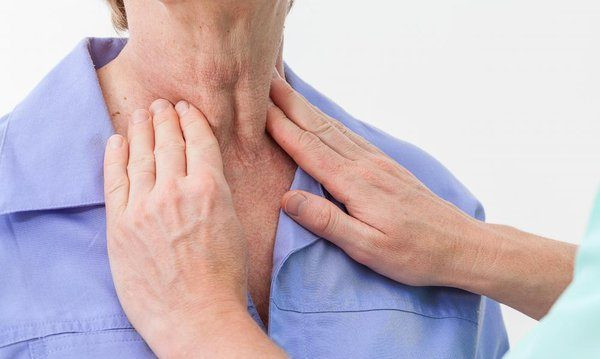Causes of lymph nodes in the neck, how to distinguish lymph nodes and cancerous nodes
The cervical lymph nodes have the task of protecting the body against pathogens that enter the body through the respiratory and digestive tracts including the nose, sinuses, throat,... and through the skin.
In adults, the body has about 450 lymph nodes located in many different locations such as the neck, armpits, groin... These nodes contain lymphocytes, which play an important role in the body's immune system.
Normally we will not feel the lymph nodes, only when the lymph nodes react and the size increases to about 6 mm, then we will recognize or feel them.

There are many causes of lymph nodes in the neck, the following are common causes:
Causes of lymph nodes in the neck
Inflammation due to reaction
There are many types of neck infections that cause swollen lymph nodes, commonly caused by acute infections caused by viruses, parasites, fungi in the nose, throat, sinuses, oral cavity or gingivitis, tooth inflammation...
Many studies also found chemical, radioactive, and physical causes of lymph node inflammation.
Common diseases related to inflammation
This is also the cause of lymphadenitis, the most common of which are pharyngitis, tonsillitis, sinusitis, otitis media, laryngitis, gingivitis, tooth inflammation, stomatitis, parotitis (mumps), pharyngitis, lymphadenitis, inflammation around the tonsils, flu, submandibular gland inflammation, zona nervosa of the face and neck, pharyngitis, laryngitis due to tuberculosis, diphtheria, etc.
In addition, studies have shown that reactive lymphadenitis is caused by physical, chemical or genetic factors, the most common of which are chronic sinusitis, allergies, and occupational diseases caused by exposure to chemicals, dust, etc., not by infectious diseases.
Systemic disease or lymph node disease
This is also one of the causes of lymphadenitis. Common diseases are tuberculous lymphadenitis; lymphadenitis in autoimmune diseases such as: Hashimoto's lymphadenitis, lymphadenitis in Kimuza disease, etc.; lymphadenitis in late-stage syphilis.
Lymphadenitis in other diseases include: anthrax, diphtheria, typhoid, parasitic infections such as dog bites, cat scratches, etc.
Some cancers cause swollen lymph nodes in the neck.
Non-Hodgkin's lymphoma, Hodgkin's disease. Lymph nodes can also metastasize from other cancers: oral cancer, nasopharyngeal cancer, lung cancer, breast cancer, throat cancer, laryngeal cancer, etc. Sometimes there is only one lymph node, sometimes there are many lymph nodes, soft or hard, with varying sizes depending on the type of cancer and stage.
How to recognize benign lymph nodes and cancerous lymph nodes
To diagnose benign or cancerous neck lymph nodes based on clinical examination and specialized tests. If it is a benign lymph node, it has small size, soft, mobile lymph nodes, slow progression, rarely painful, often has accompanying causes: pharyngitis, sinusitis or infections of the mouth and throat, teeth, tonsillitis, dermatitis of the head and neck, etc. If it is a pathological lymph node, there is usually only one single lymph node, sometimes there are many lymph nodes, soft or hard, the size varies depending on the type of cancer and stage.
However, to make an accurate diagnosis, doctors need to rely on specific, specialized diagnoses and tests.
- Ultrasound: Ultrasound results will help detect small lymph nodes, lymph nodes with shell structure, lymph node hilum, no calcification, no vascular proliferation, determine the number, location and size of lymph nodes.
- Fine needle aspiration (FNA). Clearly determines whether the lymph nodes are cancerous or benign, simple, effective, with an accuracy of 85 - 90%.

- Lymph node biopsy (needle biopsy, lymph node dissection) for pathological diagnosis helps to determine the nature of the lymph node: benign or cancerous. In addition, it also helps doctors determine what diseases the lymph node is involved in.
- CT, MRI, PET CT: Will help doctors diagnose the number, location, and nature of benign or cancerous lymph nodes, whether the lymph nodes have broken through the shell or not, invaded and related to surrounding organs and parts (blood vessels, nerves, trachea, esophagus, jawbone, etc.). At the same time, it helps specialists orient during surgery.
If you see swollen lymph nodes in your neck, it is likely due to a benign or cancerous cause. Therefore, when swollen and painful lymph nodes appear in the neck, or the lymph nodes persist for a long time and do not disappear, you should go to a specialized medical facility to see a doctor for examination and specific advice.









